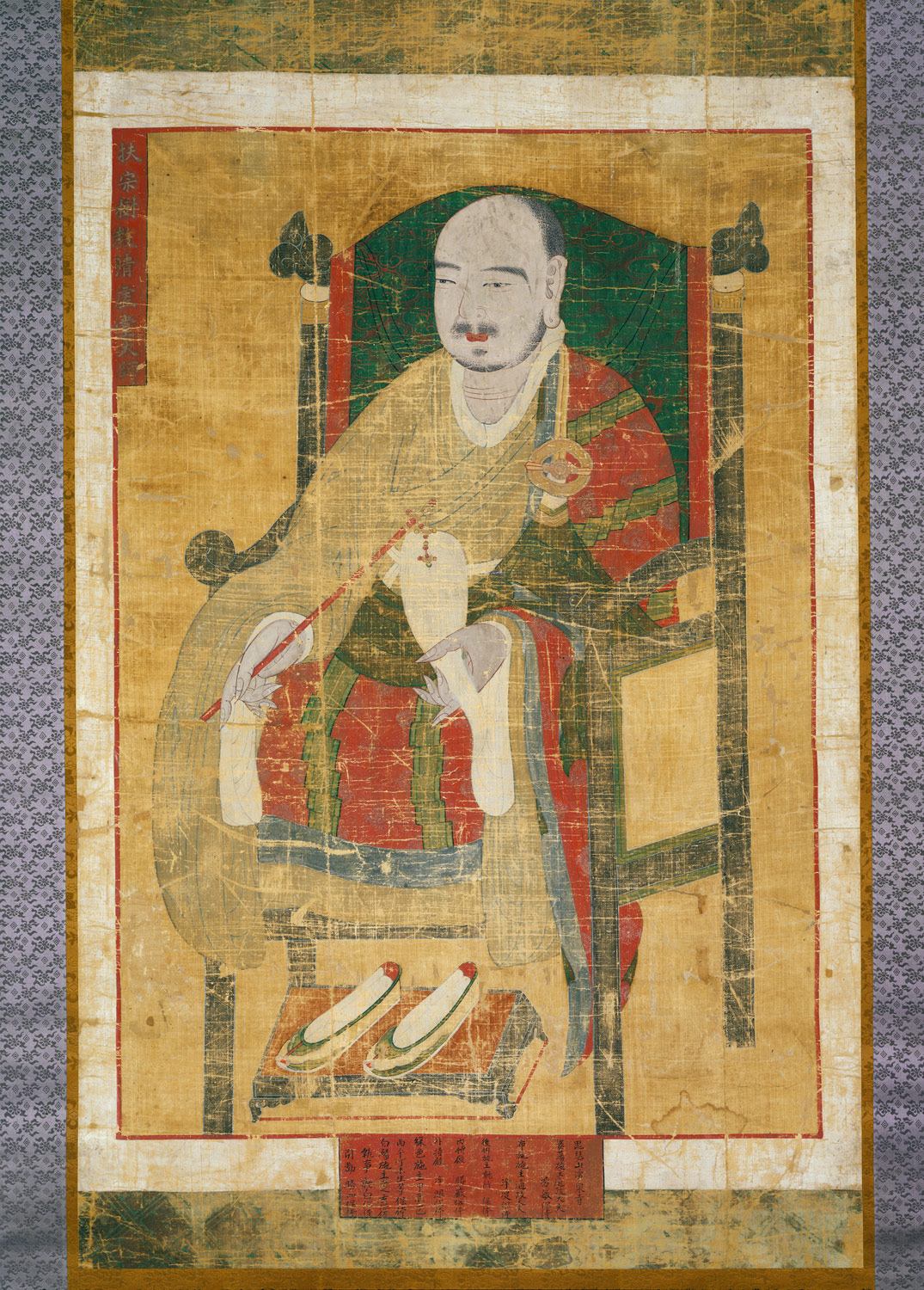This painting depicts the eminent monk Cheongheodang Hyujeong 청허당휴정 (1520–1604), better known by his posthumous title, Seosan Daesa 서산대사, or Great Master Seosan. In addition to his role as a leader of Seon Buddhism (Chan in Chinese; Zen in Japanese), Seosan Daesa was also renowned for helping lead an army of Buddhist monks against invading Japanese forces to recover the capital (present-day Seoul) in the late sixteenth century. In a period when Buddhism was officially suppressed by the government in favor of Neo-Confucianism as ruling ideology, the religion continued to develop and, at times, to prosper. Seon Buddhism, which emphasized meditation, was among the sects that flourished.
Idealized portraits of revered monks, especially patriarchs or founders of doctrinal schools, were enshrined in Buddhist temples. As is typical of such portraits from the Joseon period, the monk sits on a wood chair in three-quarter view and fills nearly the entire painting, which is devoid of a background setting. Seosan Daesa holds a large fly-whisk; his shoes are neatly arranged on a footstool. The careful delineation of facial features gives the subject a lifelike appearance. The inscription at the bottom center of the scroll provides the names of the donors who commissioned this portrait and of members of the monastery.

iBet uBet web content aggregator. Adding the entire web to your favor.
Link to original content: http://www.metmuseum.org/toah/works-of-art/59.19
